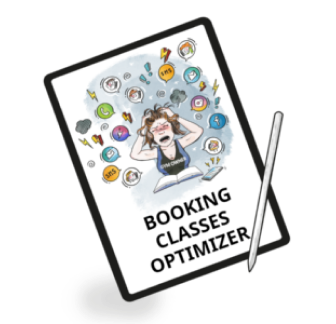Opening a gym in 2024 is both promising and challenging. High startup costs, from securing a location to buying equipment and legalities, can deter your business dreams.
Running and advertising the business also costs money, which can put finances at risk. Want to save a lot from starting a business? Invest in gym management software. It’s software that saves you a lot of time and energy, but good planning can help you deal with these costs and start off on the right foot.

What is the Cost of Opening a Gym?
The expenses can vary greatly, depending on factors like the gym’s location, size, equipment needs, and customization level. You need to think also about custom branded fitness app or gym CRM.
For a smaller, possibly home-based operation, you might need anywhere from $5000 to $50,000 to get started. However, for a larger facility in a prime location, equipped with a wide range of equipment, the costs could rise to between $100,000 and $500,000 or more.
| Type of Gym | Average Cost to Open a Gym |
|---|---|
| Home-Based Personal Training Gym | $5,000 – $10,000 |
| Specialty Studio (e.g., Ballet Gyms, Yoga, Pilates) | $15,000 – $50,000 |
| Small Personal Training Studio | $50,000 – $100,000 |
| Boutique Fitness Studio | $100,000 – $250,000 |
| Franchise Gym | $250,000 – $500,000 |
| Full-Service Commercial Gym | $250,000 – $500,000 |
Gym Startup Costs Breakdown
How to start a fitness business? Understanding the financial aspects of opening a gym in 2024 is crucial for entrepreneurs embarking on this venture. To clarify the picture, we’ve categorized the expenses for you.
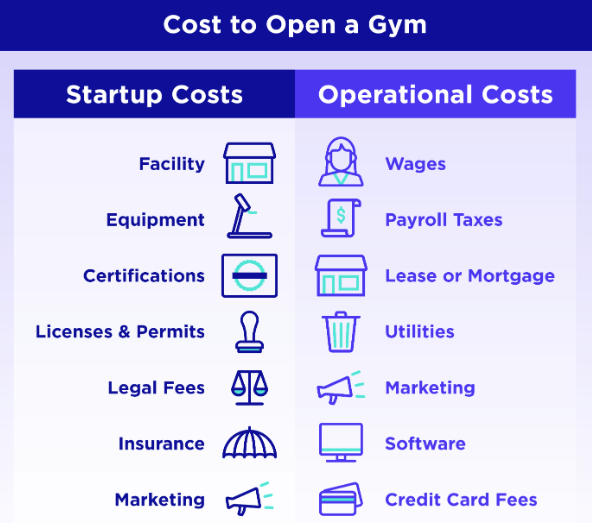
Initial Costs of Gym Opening
1. Location
$45,000 – $90,000 (Lease)
$105,000 – $150,000 (Buy)

Securing a location for your gym represents a major initial expense, significantly influenced by the choice between leasing or buying. Rental costs range from $45,000 to $90,000 a year, whereas buying demands a $105,000 to $150,000 down payment.
These figures can vary based on location, size, and the inclusion of facilities like fitness class spaces or saunas. Expect lease deposits of 3 to 6 months and a 20-30% purchase deposit. Conduct detailed market research in your target area to make an informed decision.
2. Renovation and Interior Design
Cost: $30,000 – 105,000 (Buy)
Renovating and outfitting your gym space is a critical and substantial investment. Costs can range from $30,000 to $100,000, influenced by the scale of renovation and design preferences.
This includes essential installations like:
- shower facilities
- locker rooms
- specialized gym flooring
- functional training areas
- reception
- snack bar
- ventilation systems
- heat recovery ventilation (HRV) systems
- air conditioning
- access control systems (e.g., card and QR code entry)
For a standard 3,000-square-foot gym, expect to budget around $105,000 to convert a basic space into a fully operational gym. Negotiating with landlords could potentially reduce this financial burden, with possibilities ranging from shared refurbishment costs to concessions like free rent periods.
Effective negotiation can significantly lower initial outlays, making it a crucial step in the renovation process.
3. Gym Equipment
Cost:
$2000-$3000 (Lease)
$75,000 (Buy)
$10,000-$20,000 (Non-Training Equipment)
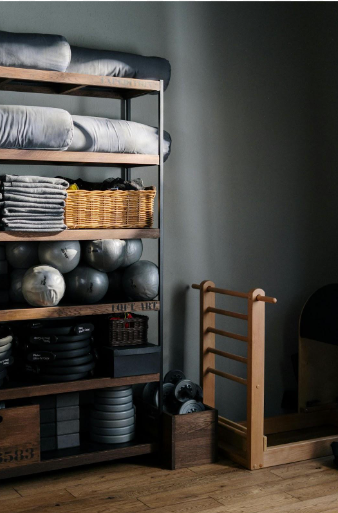
Equipping your gym involves a crucial decision between leasing and purchasing.
Leasing equipment can cost $2,000 to $3,000 monthly for a 3,000 square foot gym, offering benefits like maintenance support, regular upgrades, and tax advantages under the 2017 Tax Cuts and Jobs Act.
Purchasing equipment, however, requires a substantial upfront investment of approximately $75,000, with additional monthly maintenance costs, though it eliminates ongoing lease payments and interest.
Non-training essentials like furniture and decor could add $10,000 to $20,000 to your budget.
4. Insurance
Cost: $500 -2000 (Buy)

Insurance is non-negotiable, with costs ranging from $500 to $2,000, covering general liability, professional liability, business income and extra expense, worker’s compensation, and equipment breakdown. These policies safeguard against accidents, injuries, and unforeseen events, ensuring business continuity.
5. Licenses and Permits
Cost: $5000 (Buy)
Securing the necessary licenses and permits is vital to comply with legal standards, involving costs around $5,000. This includes obtaining a business license, trade name registration, health and safety certifications, and employer registration. Requirements vary by location, so thorough research is essential.
6. Inventory
Cost: $1000 – 5000 (Buy)
For inventory, essential for day-to-day gym operations, you’ll need to stock up on items like cleaning supplies, office materials, and fitness accessories such as yoga mats and weights.
The initial cost for these items can vary widely depending on quality and quantity but budgeting between $2,000 and $5,000 should cover the basics to get started. This inventory needs regular replenishment, which should be factored into your ongoing operational costs.
Effective management of inventory ensures your gym remains well-equipped and functional for members, contributing to a satisfactory gym experience and operational efficiency.
Operational Costs of Gym
1. Employee Wages

Cost: $75,000
The backbone of any gym is its staff. From personal trainers to front desk personnel, employee wages are a significant expense. On average, launching a gym might require an initial outlay of about $75,000, part of which will go towards salaries.
The cost can vary widely depending on the gym’s size, location, and the expertise level of the staff hired. Salaries must be competitive to attract and retain qualified professionals, making this one of the most critical operational costs. Also think about investing in gym staff management software to help you efficiently manage your team and its needs.
2. Utilities
Cost: $500 – $2000
Running a gym also means managing monthly utility bills, which include electricity, water, and internet services. These expenses can range from $500 to $2,000 monthly, fluctuating based on the gym’s size, the number of members, and operational hours.
Utilities are a constant expenditure that need careful budgeting and management, as they directly impact the gym’s monthly overheads.
3. Gym management software
Cost: $30 – 500
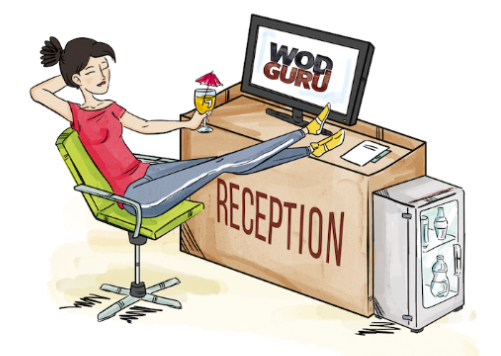
Efficient gym management software is crucial in the competitive fitness industry. An all-in-one gym management software like WodGuru simplifies operations by integrating essential functions:
- Membership Management: Gym membership management software streamlines tracking of activities, subscriptions, and payments.
- Scheduling: Enhances the organization of classes and personal training sessions.
- Financial Management: Gym billing and payment software provides accurate financial tracking and reporting.
- Gym CRM: Improves communication with members and markets effectively.
Choosing WodGuru as fitness studio management software, known for its user-friendly interface and robust features, boosts operational efficiency and customer service quality. This comprehensive solution not only eases daily operations but also supports growth by focusing efforts on retention, service improvement, and expansion strategies.
Additional Costs to Grow Your Gym
1. Marketing and Branding
Cost: $7000 – $14000

When considering how much it costs to open a gym, allocating a budget for marketing and branding is crucial. Effective marketing strategies and a strong brand identity are foundational to attracting and retaining members.
The costs associated with marketing and branding can vary, but here’s a breakdown:
- Website Development: Expect to invest between $1,000 to $5,000 for a professional, user-friendly website. This digital storefront is crucial for making a great first impression and providing essential information about your gym.
- Social Media and Online Advertising: A monthly budget of $100 to $1,000 can cover various online marketing efforts, including social media ads and search engine marketing, to effectively reach your target market.
- Signage and Promotional Materials: To promote your gym locally, budget $500 to $2,000 for eye-catching signage, flyers, and other promotional items that convey your brand’s message and offerings.
Furthermore, partnering with a freelance fitness writer can significantly enhance your content marketing strategy.
For about $500 per month, you can provide your audience with high-quality, informative content through emails and blog posts on your website. This not only establishes your gym as a credible authority in the fitness industry but also keeps your members engaged and informed about fitness, training, and nutrition topics.
2. Staff Training
Cost: $500 – $3000

Allocating $500 to $3,000 for staff training is crucial for ensuring your team is professional, knowledgeable, and ready to provide exceptional service to your members. This investment in your staff can lead to improved member satisfaction and retention rates.
3. Community Engagement
Cost: $500 – $10,000

Building a strong community around your gym is more crucial than ever in the competitive landscape of 2024. Beyond just a place for physical workouts, your gym should serve as a hub for social interaction and personal development.
Hosting regular events, challenges, and workshops can significantly enhance member engagement and retention. Consider integrating community-building platforms and social media to keep the conversation going outside of gym hours, fostering a sense of belonging among members.
This approach not only boosts your gym’s attractiveness but also turns your clientele into advocates for your brand. Engaging your gym members in this way taps into the collective desire for connection and motivation, key drivers in today’s fitness industry.
4. Digital Transformation in the fitness industry
Do not ignore the digital transformation. The fitness industry is undergoing a digital revolution that can’t be ignored by new gym owners.
In 2024, a significant trend is the move toward online platforms and applications that personalize the fitness experience through workout regimes, nutrition planning, and virtual classes. This shift towards digital is not merely a trend but a strategic opportunity for gym startups to broaden their appeal and services.
Investing in digital solutions, such as offering online training sessions, fitness applications, and even virtual reality workouts, can substantially augment a gym’s service offerings. These digital enhancements serve to not only extend your gym’s reach beyond its physical location but also to tap into new revenue streams that were previously untapped.
Moreover, integrating digital services into your gym’s offerings can lead to better customer engagement and retention. Today’s gym-goers value the flexibility, personalization, and convenience that digital solutions offer.
5. Miscellaneous Expenses
Cost: $1000 – $5000
It’s prudent for gym owners to allocate funds for miscellaneous expenses to navigate unforeseen costs effectively. These unpredictable expenses can range widely and might include:
- Emergency Repairs: Unexpected breakdowns of essential equipment like treadmills or air conditioning units can necessitate immediate repairs to maintain the gym’s service standards.
- Equipment Upgrades: The sudden need to replace or upgrade equipment to keep up with industry standards or customer expectations can arise, requiring immediate financial resources.
- Regulatory Compliance: Changes in health and safety regulations may require gyms to invest in new equipment or modify facilities to comply with updated standards.
- Utility Surges: Seasonal spikes in utility bills or unforeseen increases in rates can impact operational budgets.
- Special Events: Hosting special events or marketing promotions might incur additional costs that were not initially planned for.
- Employee Rotation: It’s important to set aside funds for when an employee leaves. Costs associated with training a new employee to uphold operational standards can significantly impact the budget.
Gym Business: Franchise vs. Independent Gym
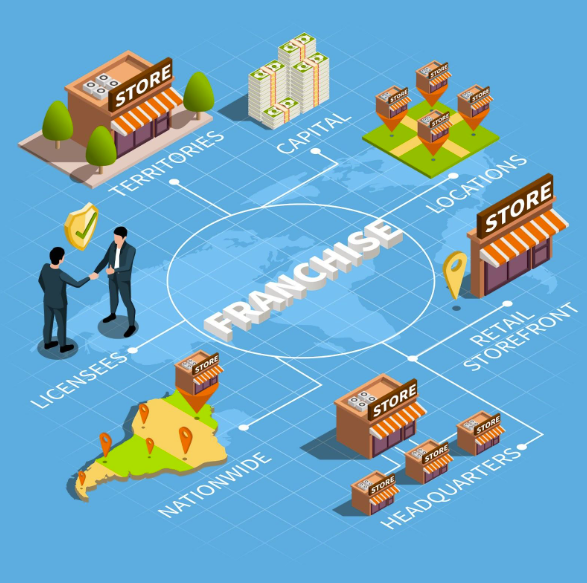
Franchise Gyms:
Opting for a franchise means partnering with established brands like Anytime Fitness or Gold’s Gym. These entities provide a turnkey business model, including branding, operational systems, and marketing support. For example, a franchisee of Planet Fitness is required to pay an initial franchise fee, which can be upwards of $20,000, plus ongoing royalty fees, which are typically a percentage of the gym’s revenue. This structure can fast-track market entry and customer acquisition due to brand recognition. However, it also means adhering to corporate guidelines, limiting the owner’s control over the gym’s offerings and operational nuances.
Independent Gyms:
Venturing into an independent gym allows for full creative and operational freedom. Owners can build a brand from the ground up, tailoring the gym’s identity, services, and community engagement to their vision and the local market’s needs. For instance, an independent gym might specialize in niche fitness trends like boutique spin classes or CrossFit, setting itself apart from the competition. Initial costs vary widely but can start lower than franchise investments, especially if the focus is on a specific niche without the need for extensive equipment. However, independent owners bear the full weight of marketing, brand development, and the risk of establishing a customer base without the safety net of a recognized brand.
How to Raise Money to Open a Gym?
Securing the necessary funds to open a gym involves more than just passion for fitness; it demands a strategic approach to financial planning. This article delves into effective methods to raise the capital needed to launch your gym, from traditional financing options to innovative fundraising strategies.
Whether you’re eyeing a boutique studio or a full-scale fitness center, the journey to turn your vision into a viable business starts with understanding and accessing the right financial resources.

1. Bank Loans
Traditional yet reliable, bank loans can provide the substantial funds required to open a gym. Financial institutions offer various small business loans and lines of credit tailored to new ventures.
To increase your chances of approval, present a comprehensive business plan and maintain a strong credit score. For instance, SBA (Small Business Administration) loans in the United States offer favorable terms for startups, including gyms, requiring lower down payments and extended repayment periods.
2. Investors and Partnerships
Attracting investors or entering into partnerships can offer both capital and business expertise. Equity investors might fund your gym in exchange for a share of ownership, while partnerships could merge resources for mutual benefit.
Highlighting the potential return on investment and the unique aspects of your gym concept can lure investors. Examples include partnerships with health professionals or local businesses to create a wellness hub, enhancing the gym’s value proposition.

3. Crowdfunding
Platforms like Kickstarter and Indiegogo provide a modern approach to fundraising, allowing you to pitch your gym concept directly to the public. Successful campaigns not only raise funds but also build a community of supporters ahead of the launch.
Offering rewards such as membership discounts, branded merchandise, or personal training sessions can incentivize contributions. A notable success story is a fitness startup that pre-sold memberships and exclusive experiences to fund the initial setup costs, demonstrating community interest and commitment.
Summary
Opening a gym in 2024 entails navigating a maze of startup costs, from initial investments in gym equipment to the legal fees and monthly costs essential for running a successful fitness business.
Aspiring gym owners must carefully plan their budgets to cover everything from purchasing free weights and cardio equipment to securing a business license and general liability insurance.
The cost to open a gym can vary greatly depending on the size and scope of the fitness facility, with boutique fitness studios and personal studios requiring a significantly lower financial investment compared to fully equipped commercial gyms.
In addition to equipment costs, gym startup costs include marketing efforts to promote gym memberships, maintenance costs to keep the gym in top condition, and wages for personal trainers and other staff.
Key Takeaways
- Average Gym Opening Costs: Vary significantly based on size, location, and type of gym. Costs range from $5,000 for home-based personal training gyms to $500,000 or more for full-service commercial gyms.
- Initial Costs: Include location leasing or purchasing ($45,000-$150,000), renovation and interior design ($30,000-$105,000), gym equipment leasing or purchasing ($2,000-$75,000), insurance ($500-$2,000), and licenses and permits (around $5,000).
- Operational Costs: Salaries for staff average around $75,000. Utilities can cost between $500 and $2,000 monthly. Gym management software varies from $30 to $500.
- Additional Costs for Growth: Marketing and branding efforts may require an initial investment of $1,000 to $5,000 and ongoing costs. Staff training can range from $500 to $3,000. Miscellaneous expenses for unforeseen costs range from $1,000 to $5,000.
- Franchise vs. Independent Gyms: Franchise gyms offer brand recognition and a turnkey model but require adherence to corporate guidelines and include fees and royalties. Independent gyms offer more creative and operational freedom but involve greater risk and responsibility for marketing and brand development.
- Raising Capital: Options include bank loans, with the possibility of favorable terms through SBA loans; seeking investors or forming partnerships for capital and expertise; and crowdfunding for public financial support and community building.
Download Your Free eBook!
Get Your Guide to Cutting Gym Expenses!
Unlock the secrets to reducing your gym’s operational costs with our exclusive eBook: “Gym Expenses Reducer”. Inside, you’ll find expert advice, innovative strategies, and practical tips on minimizing expenses without compromising quality. Perfect for gym owners and fitness entrepreneurs looking to streamline their business and maximize profits.
- Why Download?
- Reduce operational costs
- Discover cost-effective strategies
- Optimize your budget for better ROI
Download Now and start transforming your gym into a more profitable, efficient business today!
Download “Gym Expenses Reducer” eBook Now!
Frequently Asked Questions (FAQ)

How long does it take to break even with a Gym?
The time to break even varies widely among gyms but typically ranges from 2 to 3 years. Factors influencing this timeframe include initial investment size, monthly operational costs, and revenue generation strategies.
How much does it cost to start a gym?
Starting a gym requires an investment that can range from $5,000 to $500,000 or more, influenced by the type of gym, its location, equipment needs, and level of customization.
What is the minimum amount of money to start a gym?
The minimum amount can be as low as $5,000 for a small, specialized, or home-based gym setup. This cost can significantly increase based on equipment, location, and scale.
Are there grants available for gym startups?
While specific grants for gym startups are rare, entrepreneurs can explore small business grants, community health funding opportunities, or fitness industry-related grants. It’s also useful to check local government and private organizations for potential funding.
How much do gym owners make in 2024?
The profitability of a gym varies, but with the right business model, location, and management, profit margins can range from 10% to 30% after the initial years. We have prepared a detailed summary based on real statistics to further explore this topic. Check the precise data here.
What are the essential pieces of gym equipment needed for a new gym?
Starting a gym requires a thoughtful selection of equipment to meet the diverse needs of your members. Essential equipment includes cardiovascular machines (like treadmills and ellipticals), strength training equipment (such as free weights, benches, and resistance machines), and specialized gear for classes (like yoga mats and spinning bikes). The mix should cater to both beginners and seasoned athletes to ensure a broad appeal.
Related articles
How Do Gyms Make Money? (20 Ways Gyms Make Money in 2024)
Gym Pricing Strategy in 2024 (20 Tips + Average Gym Prices)
How Much to Charge for a 4, 6, or 12-Week Training Program in 2024?
How Much Do Gym Memberships Cost in 2024? (Average Gym Membership Cost)
How to Open a Boxing Gym: 13 Steps to Knockout Success in 2024


